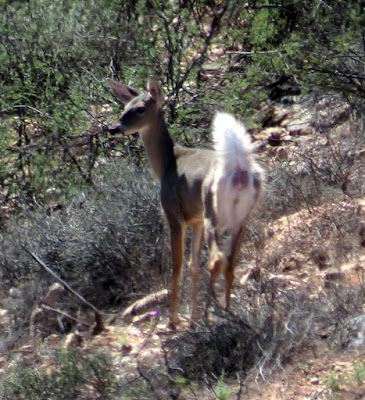Tuzigoot National Monument was not carved into a cliff. Nor was it sprawl across a plain. It was built atop a hill overlooking the Verde Valley, and stood several stories high.
From the safety of their hilltop community, the ancients descended to forage and hunt. They planted crops. They called this hill home for centuries.
From their hill, you can gaze out upon their surroundings. Although much has changed since people called Tuzigoot home, the land to one side remains arid, while the other is still marshland. Knowing how and where water flowed--when it flowed in this desert landscape--helped them capture and harness it. This knowledge also helped them avoid its potentially devastating effects. For even today, in the Verde Valley--despite all our ability to access the latest weather information--the unwary still die in flash floods.
Their time has long passed. Yet life still flourishes in the Verde Valley. You can observe it, as they once did, if you choose.
Visitors return to this ancient site every year. Descendants of those ancient inhabitants work with the National Park system to carry out regular repairs to the stonework. They may not rebuild the structures made of wood and other less durable materials. Yet they preserve the foundations, and keep the ancient hilltop community safe to visit.
My wife and I observed these members of our land's first nations during a visit last year. This year, they had moved on, to another site in need of preservation. Still standing after a thousand years, and inhabited for longer than the United States has been a nation, Tuzigoot National Monument still inspires.
Dragon Dave






No comments:
Post a Comment